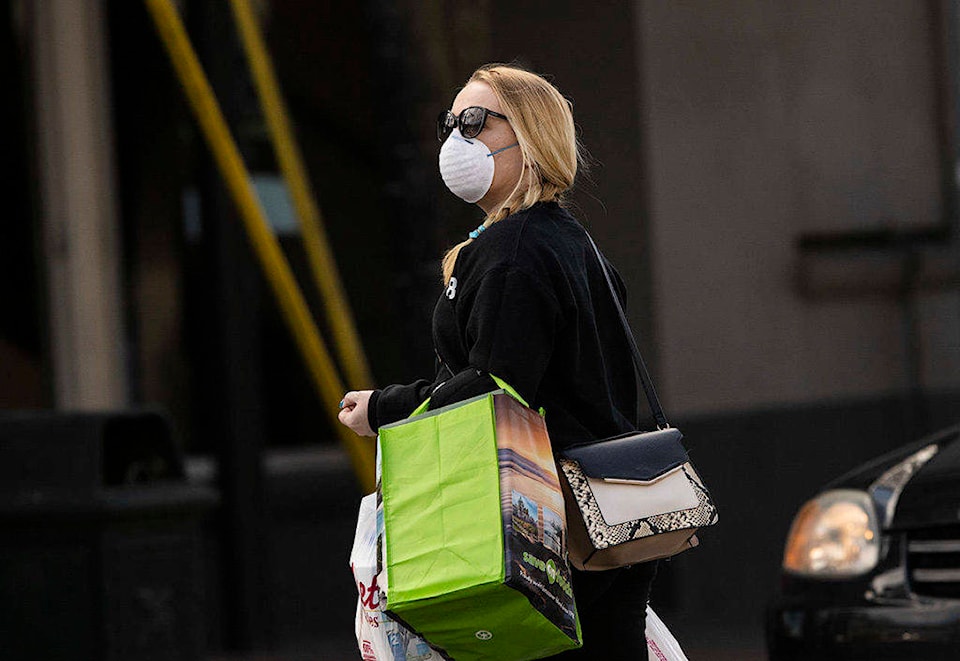Experts say that geography, demographics and strategy are all contributing factors in the success – thus far – of Vancouver Island in fighting the transmission of COVID-19.
On Vancouver Island, new cases of COVID-19 were stagnant for two weeks in late May, rising only by one new case on May 22. With only two active cases and the lowest cumulative incidence per 100,000 population across all the province’s health regions, Vancouver Island appears well poised for phase two of the B.C. restart plan.
On the Island, the new case reported Friday was a person associated with the Kearl Lake outbreak “who completed their self-isolation in Alberta and has since recovered,” a statement from Provincial health officer Dr. Bonnie Henry and B.C. Health Minister Adrian Dix noted.
“People within Vancouver Island have done an exceptional job in flattening the curve,” Island Health Chief Medical Officer Richard Stanwick told Black Press Media. “We have not had any additional COVID-19 test positive cases in approximately two weeks and it appears the virus is not circulating widely on the Island right now. The people who have had the virus are recovering, so that’s really good news.”
As of the morning of May 25, the region has confirmed 127 cases and has seen 121 people recover from the virus. Five people have died, and though 25 have been hospitalized, only one person remains in hospital care. The number of cases sat at 126 from May 7 – a data correction on May 14 clarified earlier reported numbers – until May 25.
READ ALSO: Still no COVID-19 cases at Island Health long-term care facilities
Stanwick notes that the lack of outbreaks in long-term care facilities is “one of the most encouraging signs that the measures we’re taking continue to work.”
Elizabeth Borycki, professor of health information at the University of Victoria, says geography is one piece of the transmission rate.
“We are geographically isolated, we are on an island, but prior to COVID-19, we had an international airport and we received a lot of traffic by ship and even through the various ferry systems,” she said. “What we have is a group of individuals that care and understand what the provincial public health officer has said since it became part of their daily lives.”
Borycki suggests the Island, by keeping transmission low, thus far, is feedback for the provincial strategy.
“We’re all listening and achieving the affects that are needed,” she said. “And we’re protecting people as a result.”
RELATED: COVID-19 cases next to nil on Vancouver Island
Frederick Grouzet, UVic professor of psychology, speculates that for British Columbians, health authorities are seen as being more separate from the provincial government, possibly offering a bipartisan edge to regional messaging.
“The health authorities are quite independent from the government, and that contributes to the trust,” he says. “And the message is always based on strong evidence. They are explaining why we are doing what we are doing. And so people can make sense of it very quickly and then after that, adopt the proper behaviour.”
According to Provincial Health Officer Dr. Bonnie Henry, a second wave is inevitable. Stanwick encourages Islanders’ to stick to what’s worked so far.
“It’s important that people don’t let down their guard and that we are mindful the situation could rapidly change,” Stanwick said. “That’s why it’s critical we continue to take precautions to protect ourselves and our loved ones by physical distancing, washing our hands regularly and practising good cough etiquette.”
READ ALSO: Nanaimo, Royal Jubilee to be Vancouver Island’s COVID-19 frontline hospitals
nina.grossman@blackpress.ca
Follow us on Instagram Like us on Facebook and follow us on Twitter.
Want to support local journalism during the pandemic? Make a donation here.
